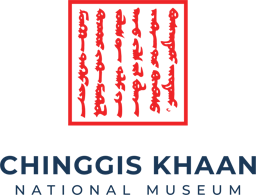
HIS MAJESTY THE EMPEROR OF JAPAN BEGINS HIS STATE VISIT AT THE NATIONAL MUSEUM OF THE GREAT KHAAN CHINGGIS, THE GENIUS OF THE MILLENNIUM
His Majesty Emperor Naruhito of Japan began his state visit to Mongolia by paying tribute to the rich history and culture of the nation. The visit commenced at the Chinggis Khaan Museum, dedicated to the Great Emperor Chinggis Khaan- revered as one of the greatest figures of the millennium- where His Majesty offered his respects before the Golden Statue of Chinggis Khaan.
Upon the arrival of His Majesty Emperor Naruhito of Japan at the Chinggis Khaan National Museum, Minister of Culture, Sports, Tourism and Youth Ch. Undram, Minister of Foreign Affairs B. Battsetseg, and the museum’s director, academician S. Chuluun, officially welcomed the delegation.
His Majesty toured the Hall of the Ancient States and the Hall of the Great Mongol Empire, viewed the Golden Statue of Chinggis Khaan, and left a message in the museum’s guest of honor book, marking a significant moment in the historical relationship between the two nations.
During the visit, His Majesty showed particular interest in the historical facts surrounding how Chinggis Khaan managed to establish a vast and powerful empire in such a short time, the role of horses in nomadic life, how the Mongol army managed its water supply, and the military campaigns of Kublai Khaan in Japan. Director and academician S. Chuluun answered the questions in detail, and the guest expressed appreciation for gaining such insightful new information.
In response to His Majesty’s inquiries, Director Chuluun emphasized that Chinggis Khaan’s power was not solely based on military conquest and advanced weaponry of the time, but more importantly on unity, the promotion of trade and cultural exchange across Eurasia, the establishment of order and governance, and the enforcement of laws and justice.
Since 1989, when Japanese researchers launched the “Three Rivers” expedition in search of Chinggis Khaan’s mausoleum, Mongolian and Japanese scholars have been actively collaborating. Their partnership has extended beyond field research to include archaeological excavations, joint publications, academic training, and the preservation of cultural heritage. For instance, the Kharakhorum Museum, near the ruins of the ancient capital, was constructed with support from the Japan International Cooperation Agency (JICA).
When the Chinggis Khaan National Museum was being established, Japanese scholars were among the first to contribute by providing replicas of rare historical artifacts from around the world. These included the Golden Gerege of Chinggis Khaan, illustrations of Kublai Khaan’s military expeditions, a replica of a letter sent by Kublai to the Japanese emperor, and artworks by Japanese artists depicting the Mongol invasions.
His Majesty Emperor Naruhito of Japan emphasized that museums serve not only to showcase exhibitions but also play a crucial role in preserving cultural heritage. He specifically highlighted the active participation of Japanese researchers in joint academic projects and expressed gratitude for the ongoing collaboration between the two countries.
